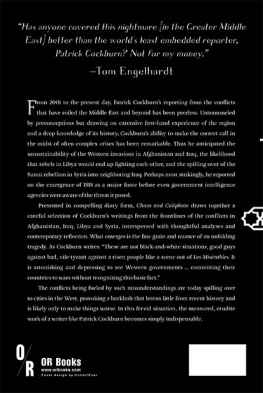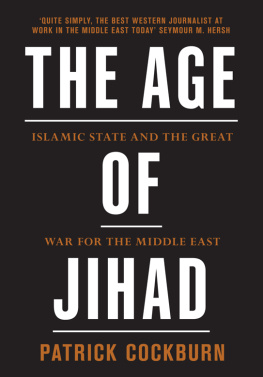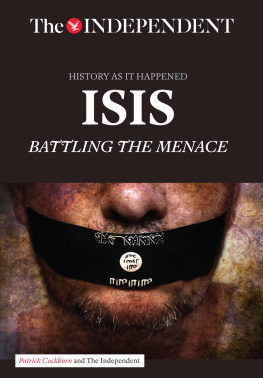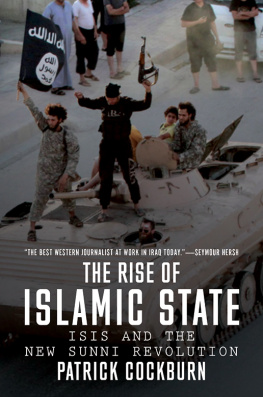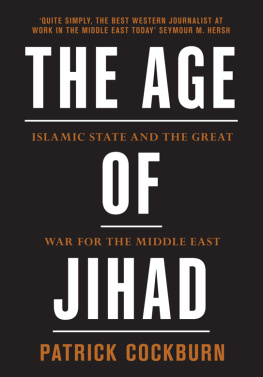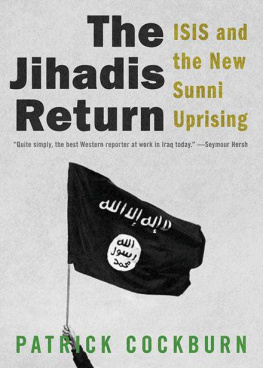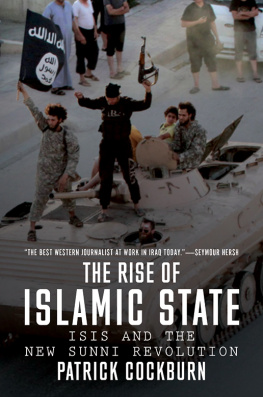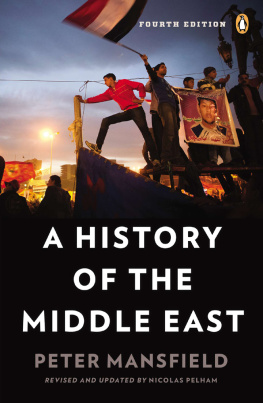All rights reserved. No part of this book may be reproduced or transmitted in any form or by any means, electronic or mechanical, including photocopy, recording, or any information storage retrieval system, without permission in writing from the publisher, except brief passages for review purposes.
Cataloging-in-Publication data is available from the Library of Congress.
A catalog record for this book is available from the British Library.
Text design by Under|Over. Typeset by AarkMany Media, Chennai, India.
INTRODUCTION
Things fall apart; the centre cannot hold;
Mere anarchy is loosed upon the world,
The blood-dimmed tide is loosed, and everywhere
The ceremony of innocence is drowned.
The best lack all conviction, while the worst
Are full of passionate intensity.
W. B. Yeats
Armed conflicts ranging between full-scale wars and a general breakdown of security are engulfing the Middle East and North Africa. Other parts of the planet are more peaceful than 50 years ago, but chaos and conflict are spreading in a great swath of Islamic countries between north-west Pakistan and north-east Nigeria. Central governments have collapsed, are weak, face powerful insurgencies or are fighting for their lives. In the central core of this region civil wars are tearing apart Iraq, Syria and Yemen with a ferocity that probably means none of them will come together again as unitary states. The war in Afghanistan continues without winners and in Libya central government has disintegrated since 2011, as it did 20 years earlier in Somalia, a country that remains in a state of armed anarchy. At either end of this vast region of instability the TurkishKurd civil war has resumed in the mountains of south-east Turkey and Boko Haram suicide bombers slaughter people in Nigeria, Mali and Cameroon.
It is between the Iranian border and the Mediterranean that these conflicts are at their most intense and have the greatest impact on the rest of the world. This region has never been truly stable in the hundred years since the fall of the Ottoman Empire: it has seen foreign invasions and occupations, the Arab-Israeli wars, military coups dtat, insurgencies, conflicts between Sunni and Shia and between Kurds and Arabs and Turks. It is here, more than anywhere else, that political, national and religious tectonic plates meet and grind together with devastating effect. For this regions inhabitants life has never been so dangerous and uncertain, with 9.5 million people displaced in Syria and 3.2 million in Iraq.
The roots of these conflicts are longstanding, but eruptions have become more frequent and destructive since 2001. We have entered a period of civil wars in which Sunni fundamentalist jihadis play a leading role. It was 9/11, the crashing of planes into the World Trade Centre, that was the starting pistol for a series of calamitous events which destroyed the old status quo. The attack provokedas it was probably intended to doUS military intervention in Afghanistan and Iraq, actions which transformed the political, sectarian and ethnic landscape of the region and released forces, the power of which went beyond anything imagined at the time. Who would have guessed at the end of 2001, just as the Taliban was being overthrown with such apparent ease in Afghanistan, that within 13 years another fanatical Sunni fundamentalist movement, the Islamic State of Iraq and the Levant (variously known as ISIS, ISIL and Daesh), would be establishing its own caliphate in western Iraq and eastern Syria? The Taliban regime evaporated quickly when it came under sustained attack by the US and its allies, but the Caliphate has proved far more resilient to international opposition. A year after it was founded in 2014 it was still there and still winning victories, notably the capture of Ramadi in Iraq and Palmyra in Syria in May 2015. As other states in the region disintegrate, ISIS alone has been able to create a new state, monstrous though it may be, capable of conscripting soldiers, taxing its people and defending its borders.
The start of the war in Afghanistan was the prelude to a more general crisis. There were already many fault lines in the Arab and Islamic worlds, but the US-led invasion of Iraq in 2003 was the earthquake whose aftershocks we still feel. It energised and expanded existing conflicts and confrontations such as those between Shia, Sunni and Kurds; Saudi Arabia and Iran; countries opposed to US policy and those favouring it. In addition, there are other trends in the region which are long-term and attract less attention, but which involve profound changes in the balance of power within and between countries. The vast wealth of the oil states in the GulfSaudi Arabia, UAE, Qatar and Kuwaithas turned into political power. It is these Sunni absolute monarchies which today hold the leadership of the Arab world, a position that 40 years ago was largely in the hands of secular-nationalist states like Egypt, Syria, Iraq, Algeria, Libya and Yemen. A related and important ideological shift took place over the same period as mainstream Sunni Islam became increasingly dominated by Wahhabism, the variant of Islam espoused by Saudi Arabia. Saudi wealth has spread the influence of this intolerant and regressive strain, which denounces other Islamic sects like Shiism as heretical and which treats women as being under the permanent subjection of men. Nowhere else in the world but Saudi Arabia and the Caliphate are women forbidden to drive a car.
A different but significant change in the political terrain was the collapse of the Soviet Union in 1991. This opened the door for full-scale Western military intervention, previously deterred by fear of the other superpowers reaction. One of the more rational explanations given by Saddam Hussein for his invasion of Kuwait in 1990 was that the Soviet Union was about to cease to be the counter-balance to the US, the absence of which would in future constrain the freedom of action of states like Iraq. As with many of Saddams calculations about foreign affairs, he got this one disastrously wrong, and the Soviet Union gave him no protection against an overwhelming US-led counter-attack that defeated his army in Kuwait. But his perception was correct that the era was ending when regional leaders could balance to their own advantage between the two superpowers.
The invasion and occupation of Iraq by the US is at the heart of this book because it destroyed Iraq as a united country and nobody has been able to put it back together again. It opened up a period when Iraqs three great communitiesShia, Sunni and Kurdsare in a permanent state of confrontation, a situation that has had a deeply destabilising impact on all of Iraqs neighbours. The natural response of any Iraqi community under pressure from a domestic foe is not to compromise but to look for foreign allies. Internal Iraqi crises swiftly become internationalised. Given that there are 22 Arab countries with a combined population of 366 million, and about 50 Islamic ones with a population of 1.6 billion, this has had serious implications for a quarter of the worlds population. In addition, there is the impact of the Iraq war on the US and Britain, whose governments had believed they would fight a short victorious war but ended up being mired in a long, draining and unsuccessful one. They may not have suffered an outright military defeat, but the very public nature of their failure meant that it became more difficult for either country to make credible threats of military force. The fact that for the moment American public opinion does not support US ground troops being sent to the Middle East is an important feature of the war now raging in Iraq and Syria.

